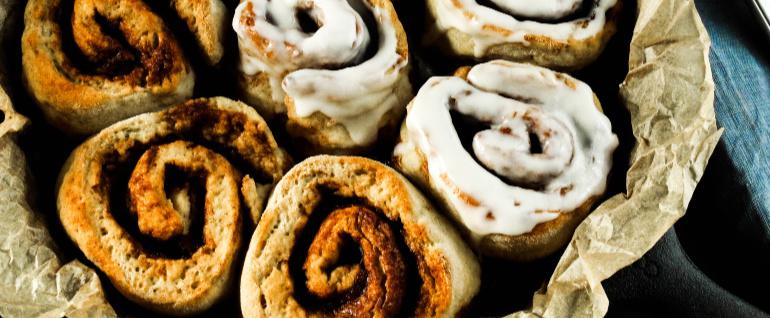


 There are two main types of yeast for baking: fresh yeast and dried yeast. Fresh yeast comes in small blocks and can be found in the refrigerated section at most grocery stores. Its short shelf-life and high flavor quality make it a valued ingredient at bakeries but limited for at-home bakers.
Most bakers turn to active dry yeast and instant yeast for yeast with a longer shelf-life. Though the two produce nearly identical results, the main difference is the size of the granules. The granules in active dry yeast are larger and require proofing before use. Instant yeast comprises much smaller granules and does not need proofing to be effective.
There are two main types of yeast for baking: fresh yeast and dried yeast. Fresh yeast comes in small blocks and can be found in the refrigerated section at most grocery stores. Its short shelf-life and high flavor quality make it a valued ingredient at bakeries but limited for at-home bakers.
Most bakers turn to active dry yeast and instant yeast for yeast with a longer shelf-life. Though the two produce nearly identical results, the main difference is the size of the granules. The granules in active dry yeast are larger and require proofing before use. Instant yeast comprises much smaller granules and does not need proofing to be effective.
 If you're new to baking with instant yeast, you may have some questions about it. To help you on your baking journey, we've rounded up a list of the most frequently asked questions and their answers.
If you're new to baking with instant yeast, you may have some questions about it. To help you on your baking journey, we've rounded up a list of the most frequently asked questions and their answers.
 Unlike active dry yeast, instant yeast can be added straight into the dry ingredients of a recipe. Though you can proof it beforehand, this is not a required step, and doing so will not impact the activation process. When working with instant yeast, the yeast will become active shortly after coming in contact with the wet ingredients in the recipe.
Unlike active dry yeast, instant yeast can be added straight into the dry ingredients of a recipe. Though you can proof it beforehand, this is not a required step, and doing so will not impact the activation process. When working with instant yeast, the yeast will become active shortly after coming in contact with the wet ingredients in the recipe.
 Looking for the perfect bread to pair with the main course during family dinner night? You've found it. This Herbed Yam Bread is a delicious and flavorful recipe that pairs well with sweet and savory dishes. Enjoy it as a side, dip it into your favorite soup recipe, or combine it with leftovers to turn into a sandwich. Loaded with good-for-you ingredients, this bread recipe is one that you won't feel guilty biting into.
Looking for the perfect bread to pair with the main course during family dinner night? You've found it. This Herbed Yam Bread is a delicious and flavorful recipe that pairs well with sweet and savory dishes. Enjoy it as a side, dip it into your favorite soup recipe, or combine it with leftovers to turn into a sandwich. Loaded with good-for-you ingredients, this bread recipe is one that you won't feel guilty biting into.